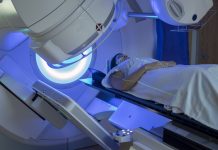Researchers have identified a new tool for detecting ovarian cancer in postmenopausal women
The study, funded by the National Institute for Health and Care Research (NIHR) and led by Professor Sudha Sundar from the University of Birmingham, compared various diagnostic tests and found that an ultrasound-based approach, known as the IOTA ADNEX model, significantly outperformed current standard tests in the UK.
Detecting ovarian cancer
According to the research, the IOTA ADNEX ultrasound protocol showed a 96% accuracy in detecting ovarian cancers. This is an improvement over the current standard of care, which identifies approximately 83% of cases using the risk of malignancy (RMI1) test. The findings suggest that implementing the IOTA ADNEX model could lead to earlier and more accurate diagnoses, potentially improving treatment outcomes for women at risk of ovarian cancer.
“This is the first time that a head-to-head study of all available ovarian cancer tests have been done in the same population,” stated Professor Sudha Sundar, emphasising the study’s comprehensive comparison of available tests in a high-risk population of postmenopausal women. The ultrasound model not only showed superior sensitivity in detecting cancerous lumps but also proved effective when administered by trained NHS sonographers.
The study shows the importance of specialised training and quality assurance for sonographers who perform ultrasound scans, as these professionals play a critical role in the early detection of ovarian cancer.
To start widespread adoption of the IOTA ADNEX model, researchers have developed online resources aimed at NHS staff, offering specialised ultrasound training and certification.
Specialised training to facilitate diagnosis
Annwen Jones OBE, Chief Executive at Target Ovarian Cancer, emphasised the urgency of early detection, noting that quicker diagnosis leads to more successful treatment outcomes. She underscored the need for increased awareness among women about the symptoms of ovarian cancer, encouraging timely consultations with healthcare providers for appropriate testing and intervention.
In response to the study’s findings, healthcare professionals and patient advocacy groups have expressed optimism about integrating the new ultrasound protocol into routine clinical practice. The potential to detect more cases of ovarian cancer early on could significantly impact patient care and survival rates.
Moving forward, stakeholders are advocating for swift implementation of the IOTA ADNEX model across NHS facilities, aiming to enhance diagnostic accuracy and streamline treatment for women at risk of ovarian cancer.
The study’s authors urge continued collaboration between researchers, healthcare providers, and patient advocates to ensure that advancements in diagnostic technology translate into tangible benefits for patients.
As efforts to improve ovarian cancer detection and treatment continue, the study represents a pivotal step toward leveraging advanced ultrasound techniques for better patient outcomes. The research team’s commitment to expanding access to specialised training underscores a broader commitment to enhancing healthcare delivery and patient care in the UK.











